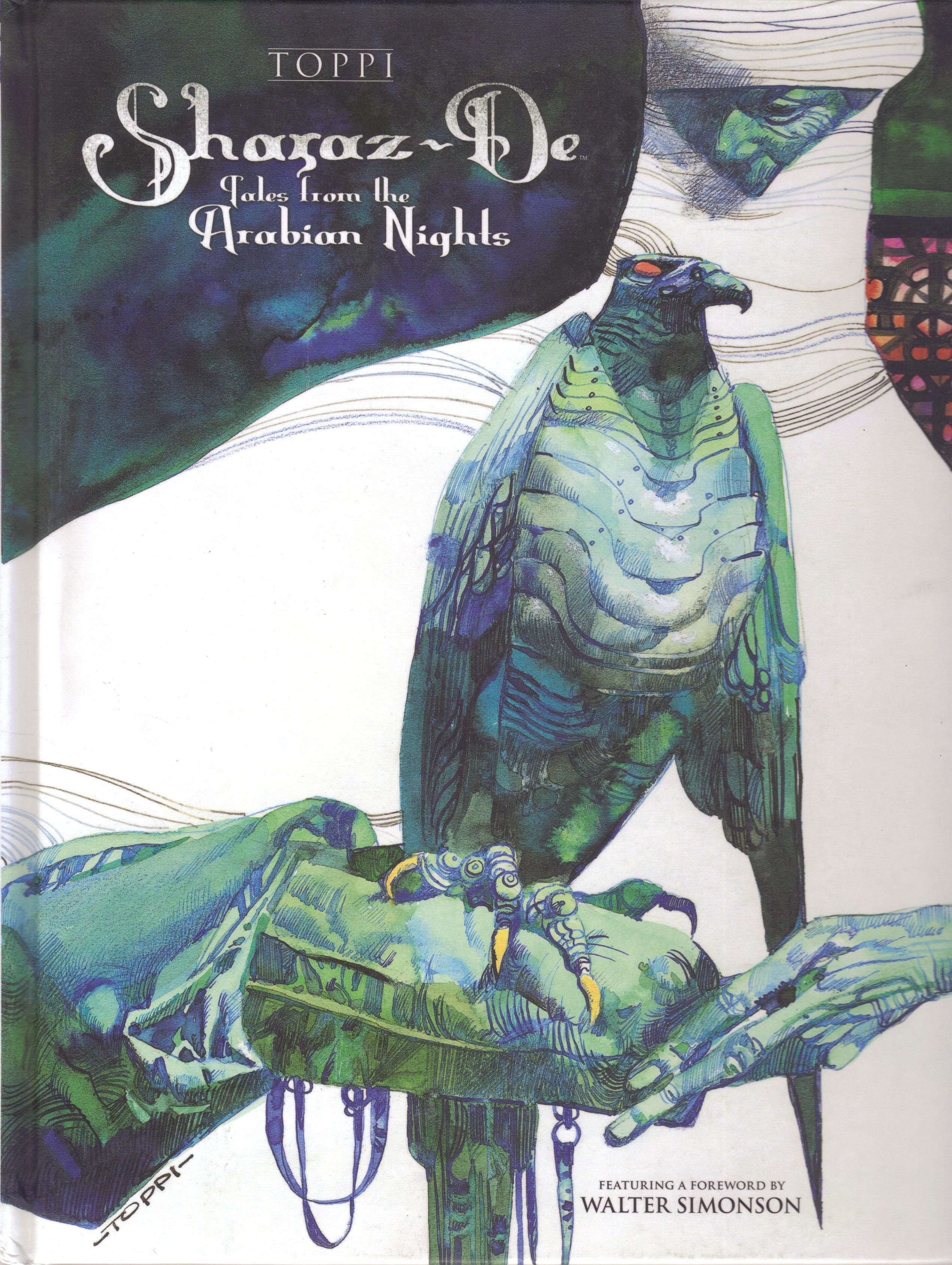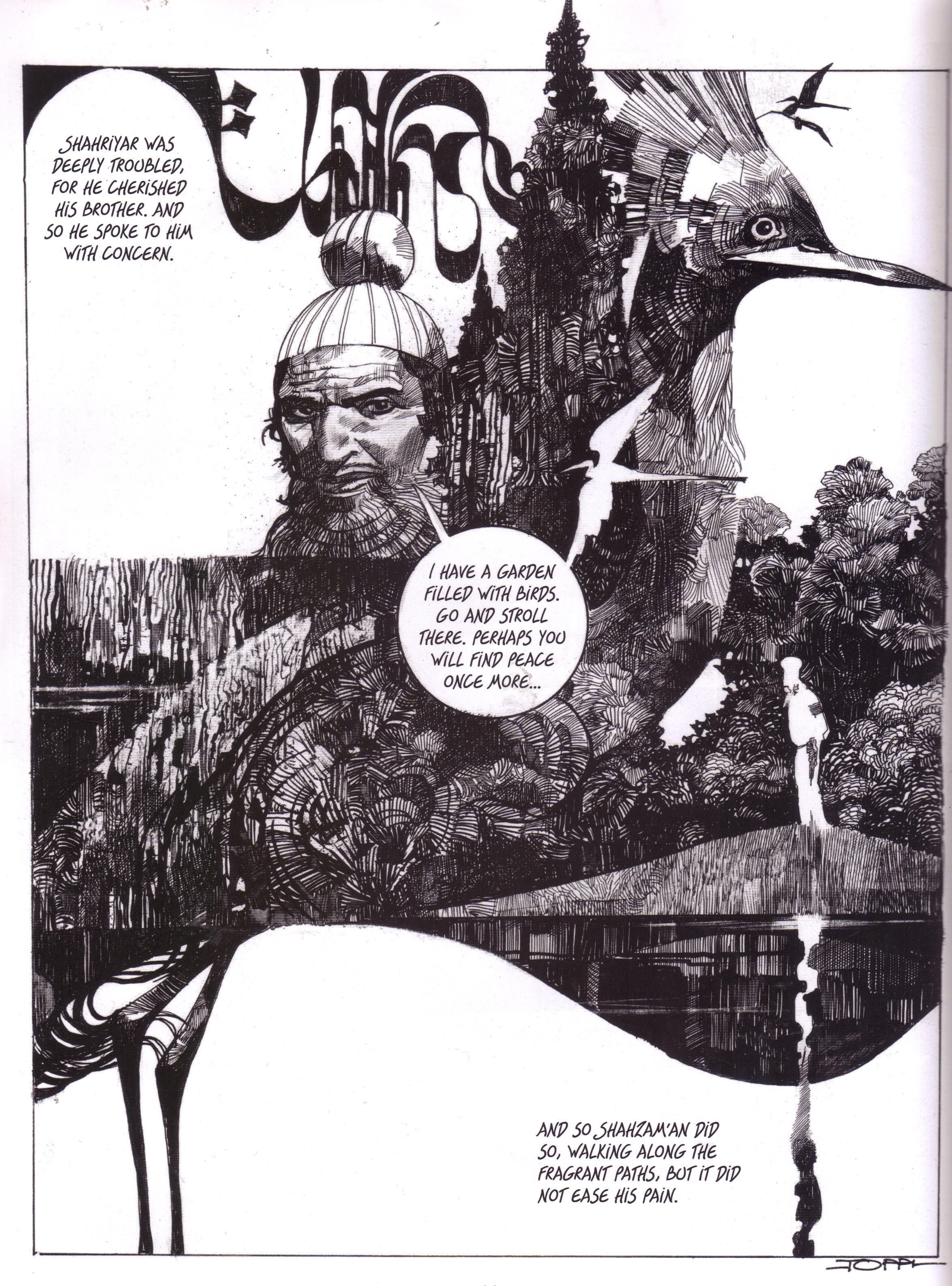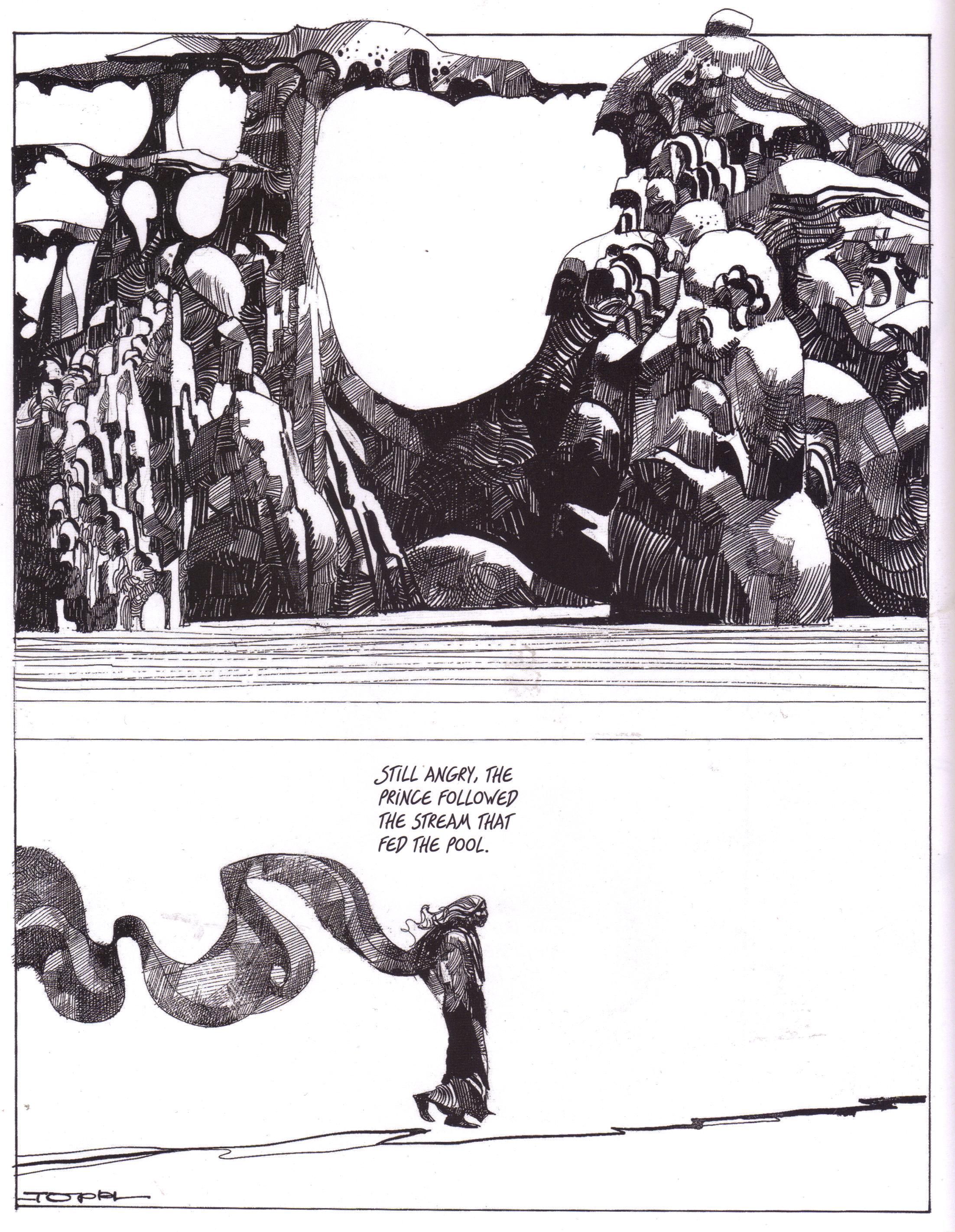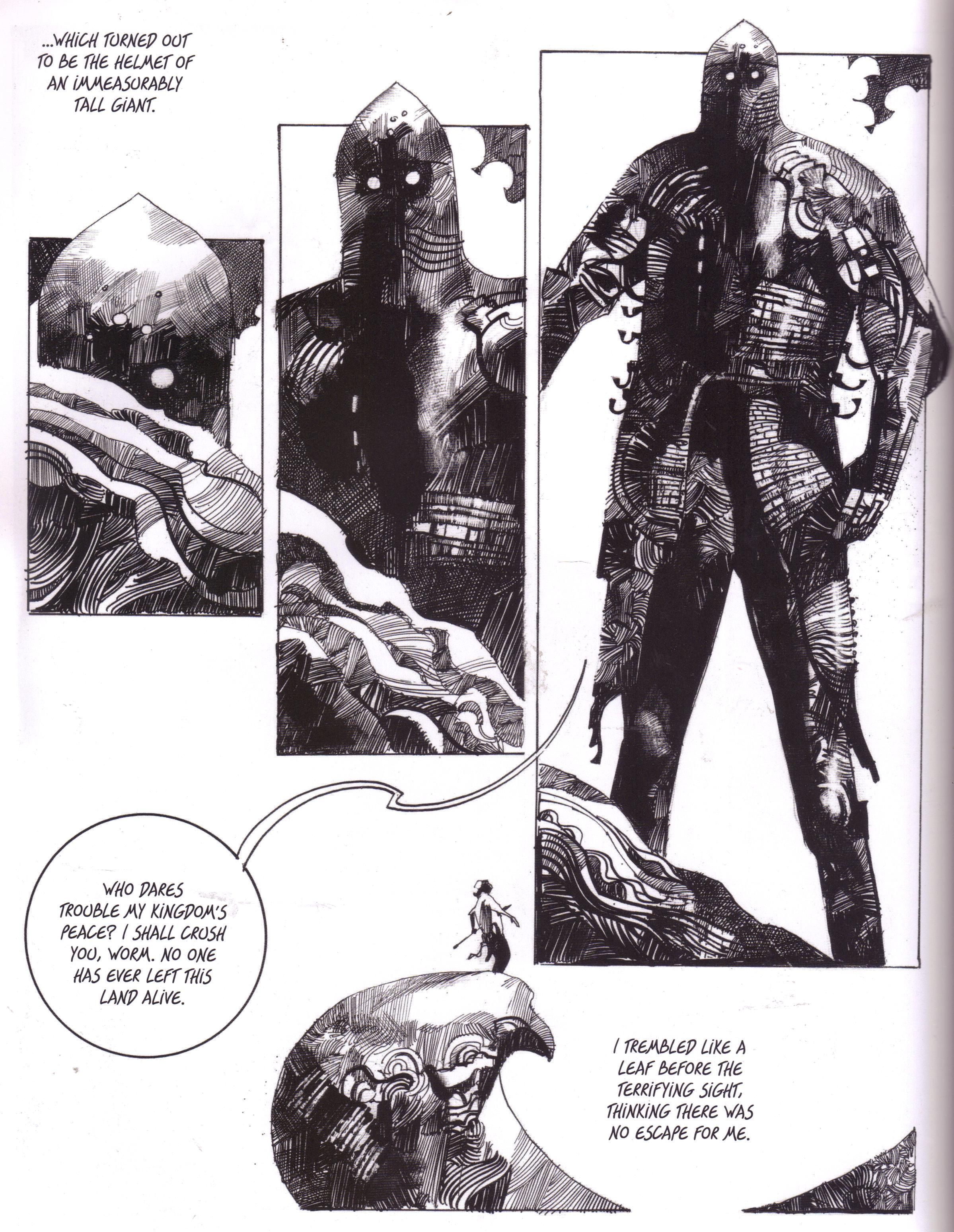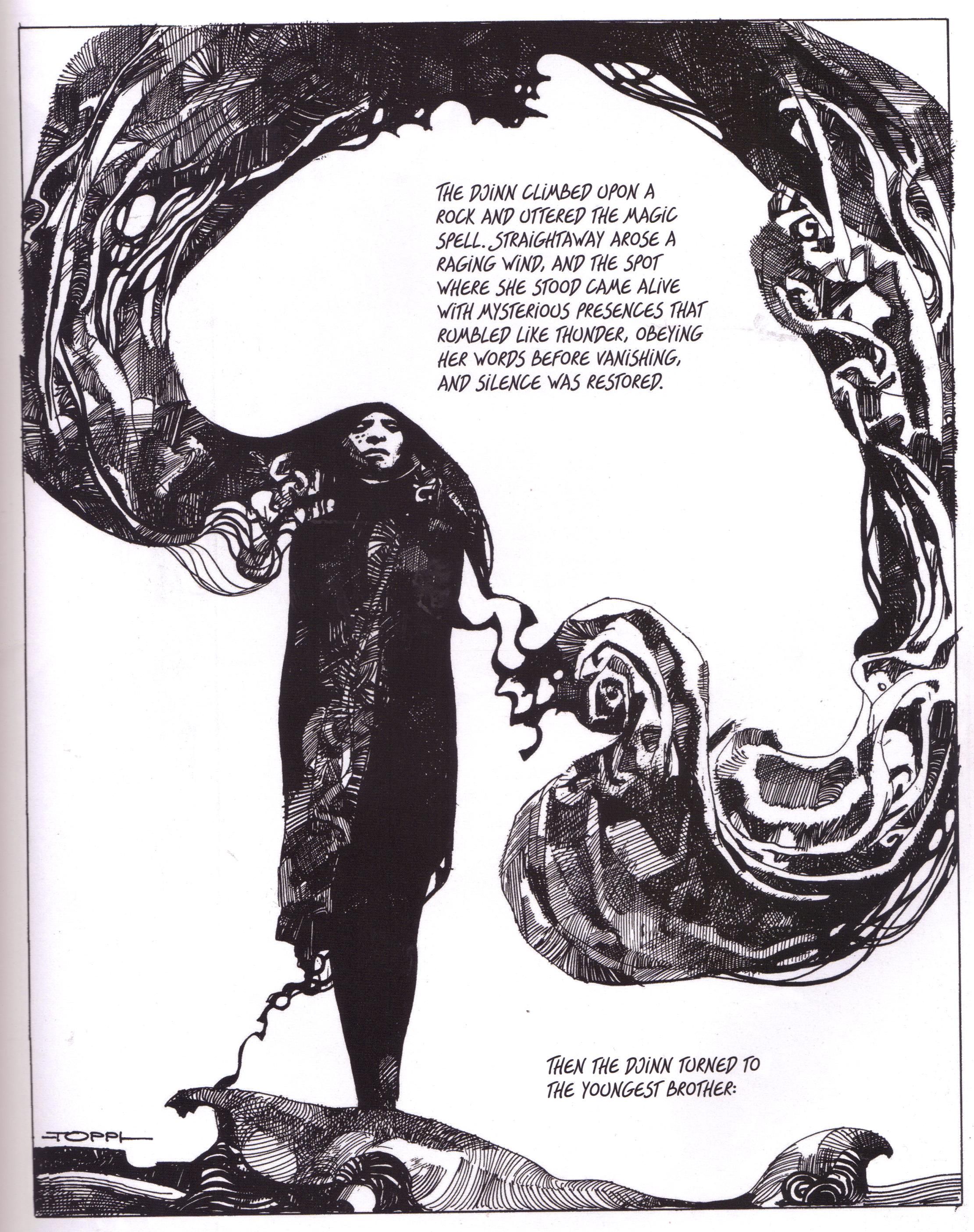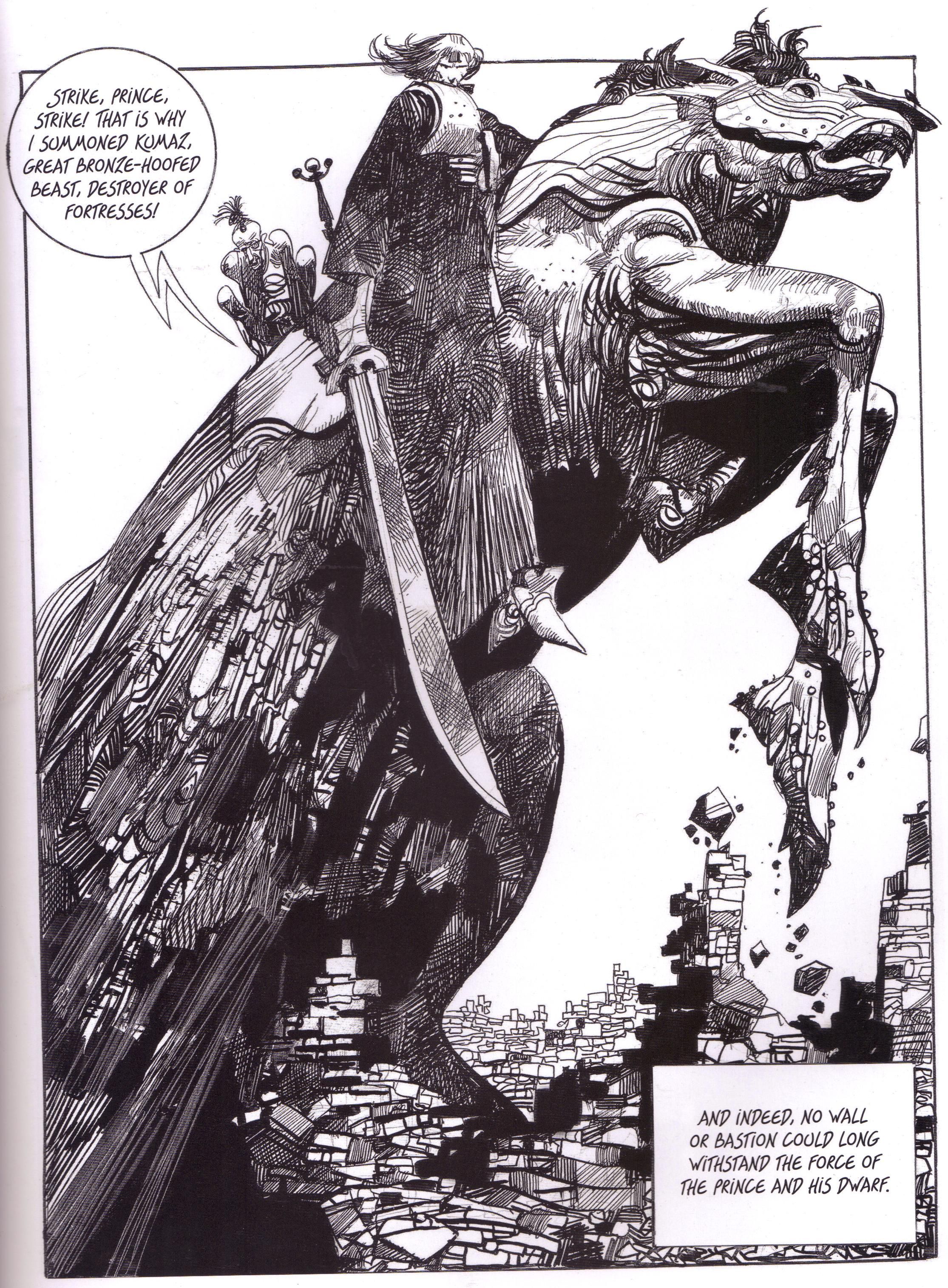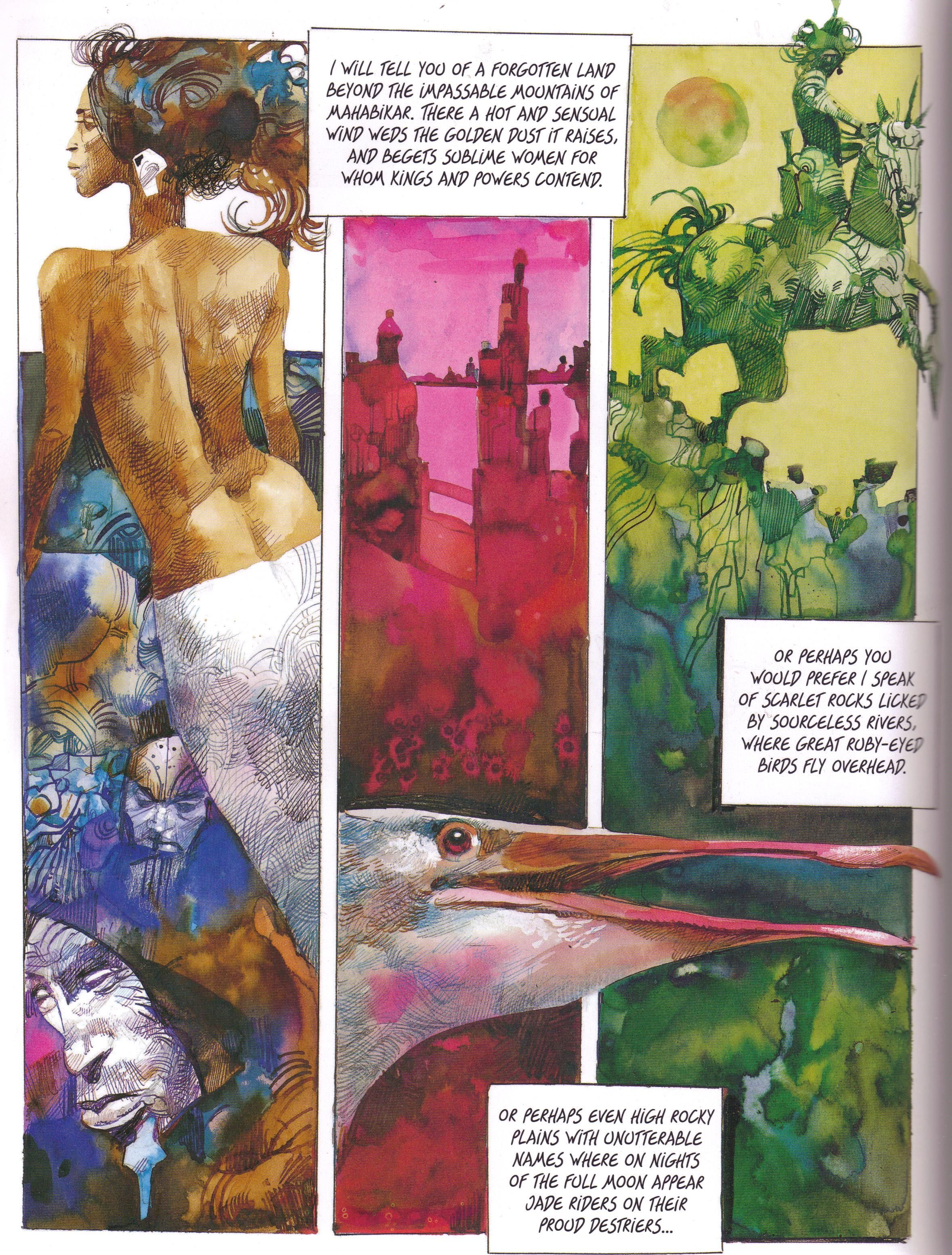Well, I wish I had heard of Sergio Toppi before he died, but I guess it's better than never having heard of him, right?
Yes, it's true that I don't think I'd ever heard of Sergio Toppi before this book was solicited, but maybe I had. I do know I didn't own anything by Toppi or seen his artwork, so even if I had heard of him here or there, I was unfamiliar with his work. This is the first English translation of a 1979 Italian comic, and it's very cool that Archaia decided to publish it. It's a handsome, large-sized hardcover for 30 bucks, and it's worth every penny. Toppi died last August, unfortunately, but let's hope more of his work finds its way into English. That would be nice.
The set-up of the comic is easy: A cuckolded king visits his brother, who's also a king, and while sojourning there, discovers that the brother's wife is also committing adultery. The second brother decides that each night, he will have sex with a woman and then execute her in the morning. Why this is a good punishment isn't clear, but all it does it bring Sharaz-De into the picture - she's a young woman who chooses to go to the king and, instead of having sex with him, she tells him stories. Every day she laments that she will be killed, and every day the king holds her execution so she can tell him another story. So, yes, it's the tale of Scheherazade. Toppi doesn't even give the book an ending - it just ends with the king staying the execution another day. It's just a series of stories, but when they're illustrated as Toppi does, that's not really a big problem.
The stories are all entertaining, if in the same vein - there's usually someone down on their luck who finds some kind of magical being which helps them out, but then there's a cruel twist of fate that keeps the protagonist from living a happy life. A prince kills his loyal falcon over a misunderstanding and laments; a prince is cured of leprosy but lets his pride overcome his gratitude and pays dearly; a man gains everything as long as he doesn't invoke the name of God, and foolishly forgets this injunction; a brother pitted against his two older brothers forgets the words of a djinn and ends up her slave; a prince ignores the advice of a dwarf and loses the only thing he loves; a greedy man steals a lonely man's only treasure and is betrayed by it; a rich merchant seeks wisdom but is driven mad. Some of the stories have happy endings - a man tricks a demon that he unwittingly released; a general's mercy overcomes his king's cruelty; a man finds his fortune - but they also involve a great deal of suffering before their upbeat resolutions. The most interesting thing about Toppi's stories is that the person who falls is always someone great and powerful, while the person or creature they ignore is usually handicapped in some way - they're ugly, poor, deformed, or (gasp!) female. I know nothing about Toppi's political inclinations, but it's interesting that he brings down the rich and powerful in this story and raises up the worker - even the general in "Mudgiajd and His King" is subordinate. It's also a measure of Sharaz-De's storytelling skills that she continues to live even as she tells stories that can be seen as revolutionary in nature.
It's Toppi's magnificent artwork, however, that makes this a must-buy. Walt Simonson wrote the foreword to this book, and it's not surprising that Simonson writes about how much he loves Toppi's work - Toppi is obviously a big influence in Simonson's art. I don't even know if I can write about his artwork well enough to do it justice. Toppi is amazingly detailed, as the desert world in which the book is set comes to magnificent life under his pen, and his use of swirling lines make it even more Asiatic and lustrous. This is an "Orientalist," archaic view of the Arab world, but it's still marvelous. Toppi's characters are bold and striking, with a mixture of Semitic and African characteristics, and Toppi adorns them in gorgeous robes and armor and headgear that turn them into gods on earth, easily able to contend with the demons and djinn who also populate the book. He uses negative space beautifully, and his page compositions are superb - he uses panels, but he also often blends several scenes together in one splash page that remain remarkably easy to read. His creatures are beautiful - enormous and occasionally grotesque, but also marvelously ornate and perfectly suited for the magical world that Sharaz-De embroiders every night. Toppi experiments with some colors in the book, and those are wonderful, too - deep blues and purples and greens turn the desert at night into a mystical place, while the rich browns and yellows of the clothing during the day make the characters almost a part of the landscape. It's an amazingly sensual book, packed with precise details and expansive vistas and fierce characters, and perhaps the only one who comes close in American comics is Simonson himself. Here are some more samples:
Sharaz-De is a wonderful book to read, but it's an even more fascinating book to look at. Simonson writes that he's had a copy for years but never read it because he doesn't read Italian. In this case, that's not too much of a hindrance, as it really is the kind of book you could just stare at for hours picking out all the ways Toppi visually tells the story. Although the stories could be a bit better, I still Strongly Recommend this book. Now I'll have to track down more of Toppi's stuff!


